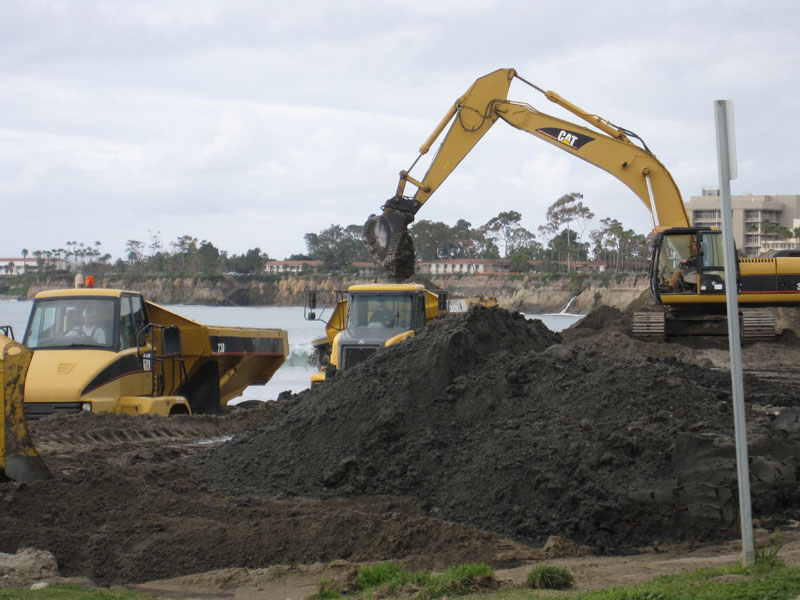
Beach-renourishement operations,California. Photograph: © SAF — Coastal Care.
“Development is absolutely responsible for the majority of the beach nourishment,” Andrew Coburn, assistant director of The Program for the Study of Developed Shorelines at Western Carolina University, said. “Well over 99 percent of the shorelines that are nourished are developed so there is some economic value placed behind them.”
Excerpts;
Here is a summary of what Florida and other coastal states and communities have been doing to protect and rebuild their shorelines based on to the American Shore and Beach Preservation Association (ASBPA) data…
Read Full Article; Reuters (02-16-2018)
Gone with the wind: storms deepen Florida’s beach sand crunch; Reuters (02-16-2018)
Costs of so-called beach renourishments are a fraction of the total, measured in hundreds of millions of dollars, but the effort is crucial for Florida’s $67 billion tourism industry. And while sand needs are surging, there is not enough to go around…
The world is running out of sand; The New Yorker (05-29-2017)
Running out of sand: in numbers; AlJazeera (12-26-2017)
Sand, Rarer Than One Thinks: A UNEP report (GEA-March 2014)
Despite the colossal quantities of sand and gravel being used, our increasing dependence on them and the significant impact that their extraction has on the environment, this issue has been mostly ignored by policy makers and remains largely unknown by the general public.
In March 2014 The United Nations released its first Report about sand mining. “Sand Wars” film documentary by Denis Delestrac – first broadcasted on the european Arte Channel, May 28th, 2013, where it became the highest rated documentary for 2013 – expressly inspired the United Nations Environment Programme (UNEP) to publish this 2014-Global Environmental Alert.
The Economist explains: Why there is a shortage of sand; The Economist (04-24-2017)
It may be plentiful, but so is the demand for it…
The Conservation Crisis No One Is Talking About, TakePart (09-21-2016)
Beaches around the world are disappearing. No, the cause isn’t sea-level rise, at least not this time. It’s a little-known but enormous industry called sand mining, which every year sucks up billions of tons of sand from beaches, ocean floors, and rivers to make everything from concrete to microchips to toothpaste…
Sand Is in Such High Demand, People Are Stealing Tons of It, By Dave Roos; HowStuffWorks (03-06-2017)
As strange as it may sound, sand is one of the world’s hottest commodities. The global construction boom has created an insatiable appetite for sand, the chief ingredient for making concrete. The problem is that sand isn’t as abundant as it used to be. And when high demand and high value meets scarcity, you open the doors to smuggling…
A looming tragedy of the sand commons; Science (09-08-2017)
Because of the difficulty in regulating their consumption, common-pool resources are prone to tragedies of the commons as people may selfishly extract them without considering long-term consequences, eventually leading to overexploitation or degradation. Even when sand mining is regulated, it is often subject to rampant illegal extraction and trade…
Sand Wars, An Investigation Documentary, By Mutlti-Awards Winner Filmmaker Denis Delestrac (©-2013)
“The construction-building industry is by far the largest consumer of this finite resource. The traditional building of one average-sized house requires 200 tons of sand; a hospital requires 3,000 tons of sand; each kilometer of highway built requires 30,000 tons of sand… A nuclear plant, a staggering 12 million tons of sand…”
As of 2011-2012, when investigative filmmaker Denis Delestrac and team, were collecting and unveiling sand mining datas and information from the professionals involved, “…the sand business was estimated to be a $70 billion industry, worldwide…!”—Denis Delestrac (©-2013)









